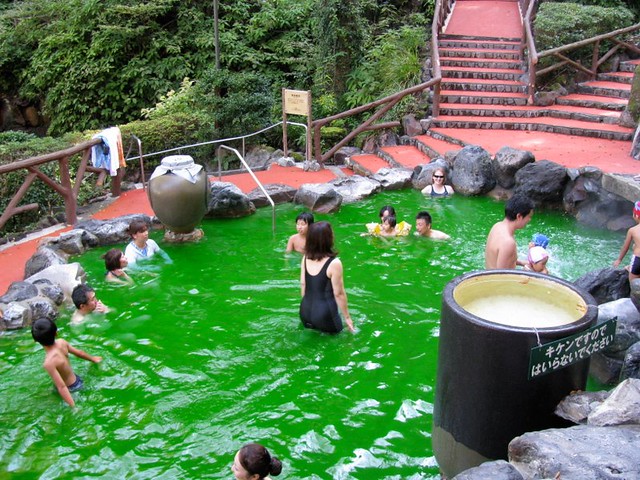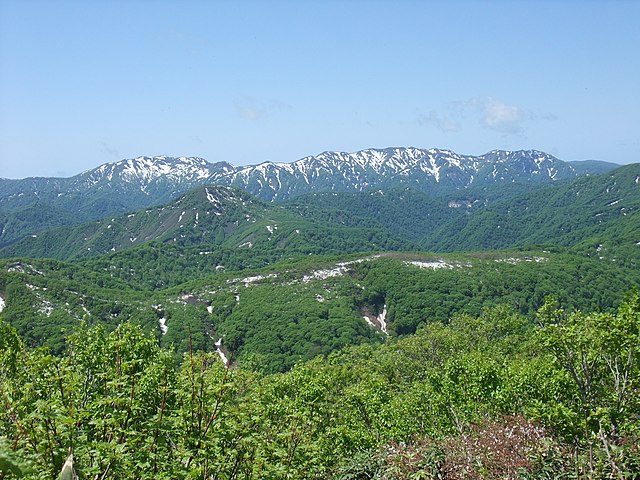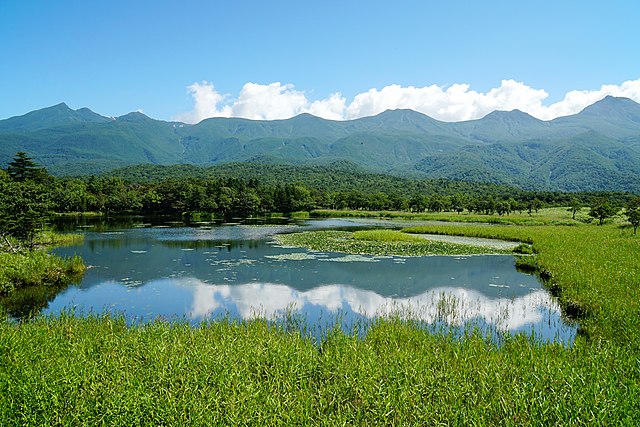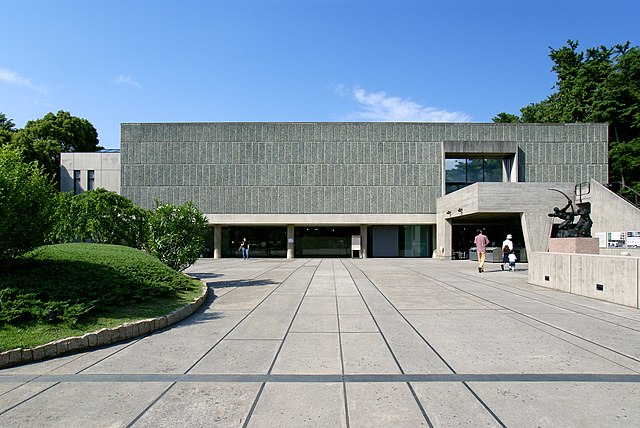Previously on Sekai Ichi, I wrapped up a day-tour of the
Fuji Five Lakes, part of one of Japan's UNESCO World Heritage Sites. What is that, you
may be wondering? A World Heritage Site is a landmark or area with
significant natural and/or cultural value, as designated by the United Nations
Educational, Scientific, and Cultural Organisation (UNESCO). Every year,
UNESCO's member nations get together and pick a selection of nominee locations,
submitted by their countries' governments, for inclusion on the World Heritage
List. Basically, it's like a "hall of fame" for landmarks.
Sites are selected for the World Heritage List based on their historical and/or
natural value, and are thus categorised as Cultural, Natural, or Mixed.
The grounds of each site is given protected status, as the purpose of the World
Heritage List is to preserve and pass down these pieces of our heritage for
future generations. As of this article, there are over a thousand
World Heritage Sites across 193 countries. Japan is home to twenty-two
World Heritage Sites, eighteen of them designated as Cultural and the remaining
four as Natural.
1)
Buddhist Monuments in the Horyu-ji Area
Type: Cultural
Inscribed in: 1993
Horyu-ji (法隆寺) is a Buddhist temple complex located southwest of Nara (itself
featured later on this list). Not only is it one of the oldest temples in
Japan, established in AD 607, but some of its buildings are the oldest wooden
structures in the world.
2)
Himeji-jo
Type: Cultural
Inscribed in: 1993

|
The main keep of Himeji Castle.
Taken by the author on Saturday, 19 November 2016.
|
Himeji Castle (姫路城,
Himeji-jō), west of Kobe in Hyogo Prefecture, is
one of only a dozen
castles
to have survived since the end of the feudal era. Of that prestigious
list, Himeji-jo is the largest, most complete, and most beautiful. It
miraculously survived many wars and disasters over its four-century existence,
and looks none the worse for wear. After you make your way through the
main keep, be sure to visit the west bailey and, time permitting, the adjacent
landscape garden Koko-en. You can read my report on Himeji Castle
here.
3)
Yakushima
Type: Natural
Inscribed in: 1993

|
Shiratani Unsuikyo, a verdant ravine in Yakushima.
Σ64
/ CC BY
|
Yakushima (屋久島) is a subtropical island in between Kyushu and Okinawa.
Wide swaths of this island are covered in dense forests of cedar trees.
These trees, known as
yaku-sugi (屋久杉, lit. 'old home cedar') after
their home island, are thousands of years old. Anime fans may also have
heard of Yakushima, as its forests were an inspiration for settings in the
Studio Ghibli film
Princess Mononoke.
4)
Shirakami-Sanchi
Type: Natural
Inscribed in: 1993
Shirakami-Sanchi (白神山地) is a mountain range in the northern Tohoku region,
straddling Akita and Aomori prefectures. Its core area consists of the
world's only virgin forest of
Japanese beech (橅/ブナ,
buna) trees, meaning it has suffered no human
development of note. Because of its status, entry into the core zone
requires a permit acquired in advance. However, there are also plenty of
interesting natural sites in the vicinity, including waterfalls, canyons, and
vividly-coloured lakes. Coincidentally, these mountains have also been
cited as a reference for
Princess Mononoke.
5)
Historic Monuments of Ancient Kyoto
Type: Cultural
Inscribed in: 1994

|
The main hall of Kiyomizu Temple.
Taken by the author on Friday, 18 November 2016.
|
Kyoto (京都,
Kyōto) was the capital city of Japan for more than a
thousand years, and it was spared from most of the wars and natural disasters
which have afflicted the country. This combination of conditions has led
to Kyoto hosting a wealth of long-standing shrines, temples, and other
historical buildings. Of the seventeen properties included in this
listing, some of the most famous are
Kiyomizu-dera, Kinkaku-ji, Ryoan-ji, and Nijo Castle.
6)
Historic Villages of Shirakawa-go and Gokayama
Type: Cultural
Inscribed in: 1995
Shirakawa-gō (白川郷,
Shirakawa-gō) and Gokayama (五箇山) are a pair of
towns famous for their neighbourhoods of triangle-shaped, thatched-roofed
farmhouses. This style of architecture is known as "gassho-zukuri"
(合掌造り, lit. 'clasped hands'), as it evokes the image of a monk's hands
clasped in prayer, and is effective in keeping the buildings standing amid the
region's heavy snowfalls. This region has kept its traditions preserved
because of its remote location -- highways linking it to outside cities were
only built in the late 20th century. These days, a good number of these
houses welcome visitors to stay overnight in their rustic accommodations, and
are especially popular during winter snowfalls when they are lit up at night.
7)
Hiroshima Peace Memorial (Genbaku Dome)
Type: Cultural
Inscribed in: 1996

|
The "A-Bomb Dome" at Hiroshima Peace Memorial Park.
Taken by the author on Monday, 21 November 2016.
|
During the end of World War II, Hiroshima (広島) was the first city in history
to be struck with an atomic bomb. Virtually all of its buildings were
destroyed by its intense explosion, but among the few left standing was an
exposition hall. Despite being located so close to the blast's epicentre,
much of it miraculously survived. Its ruins have been left standing as a
monument to the tragic event, and have come to be known as the "A-Bomb
Dome". You can read my report on the A-Bomb Dome and the surrounding Peace
Park
here.
8)
Itsukushima Shrine
Type: Cultural
Inscribed in: 1996

|
Looking out from Itsukushima Shrine to its floating torii gate.
Taken by the author on Tuesday, 22 November 2016.
|
Close to Hiroshima (the last entry in this list) is the island of Itsukushima
(厳島), also known as Miyajima (宮島). This island was so sacred that its
eponymous Shinto shrine was built on stilts atop the bay, so people would not
have to set foot on the island proper. The shrine's most iconic symbol is
its giant torii gate, situated further offshore. You can read my report on
Itsukushima Shrine
here.
9)
Historic Monuments of Ancient Nara
Type: Cultural
Inscribed in: 1998

|
The main hall of Todai-ji.
Taken by the author on Wednesday, 26 May 2010.
|
Nara (奈良), a Kansai-region city located south of Kyoto and east of Osaka, is
another of Japan's former capital cities. This listing covers five
Buddhist temples including Todai-ji, home of a giant bronze Buddha statue, as
well as the Heijo imperial palace ruins, the Kasuga-taisha Shinto shrine,
and the Kasugayama primeval forest immediately behind the latter.
10)
Shrines and Temples of Nikko
Type: Cultural
Inscribed in: 1999
Nikko (日光,
Nikkō) is a town in the Kanto region, north of Tokyo.
This listing includes the buildings of two Shinto shrines, Tosho-gu and
Futarasan-jinja, and one Buddhist temple, Rinno-ji. In particular,
Tosho-gu also serves as the mausoleum of the famous shogun ruler
Tokugawa Ieyasu
(徳川 家康, 1543-1616), whose retainers built a magnificent gilded shrine
complex in his honour.
11)
Gusuku Sites and Related Properties of the Kingdom of Ryukyu
Type: Cultural
Inscribed in: 2000
The islands of Okinawa were an independent kingdom until being annexed by Japan
in 1879. Its kings lived in castles known as
gusuku (グスク/城,
lit. 'castle'), characterised by their simple yet thick stone walls. Only
ruins of these walls exist at most gusuku sites, with the exception of the
brilliantly-reconstructed Shuri Castle (pictured) in downtown Naha.
Note: Shuri Castle, pictured above, was destroyed again by fire in October 2019. Current plans are to rebuild the damaged parts by 2026, but the castle park is still open in the meantime.
12)
Sacred Sites and Pilgrimage Routes in the Kii Mountain Range
Type: Cultural
Inscribed in: 2004
The Kii Mountains (紀伊山地,
Kii Sanchi), located in the southern Kansai region,
are especially sacred to the Japanese religions. The focal points of
worship are a trio of Shinto shrines: Kumano Hongu-taisha, Hatayama-taisha, and Nachi-taisha. They are connected by a series of hiking trails
collectively known as the Kumano Kodo, which
exist in varying states to this day. To the north, the heritage zone
includes mountains such as Koya-san and Yoshino, also sacred centres of
different Buddhist and Shinto sects.
13)
Shiretoko
Type: Natural
Inscribed in: 2005
The Shiretoko National Park (知床国立公園,
Shiretoko Kokuritsu Kōen)
covers the eponymous peninsula in northeastern Hokkaido. It remains
relatively undeveloped, with roads only reaching two-thirds up the
peninsula. This relative lack of development has allowed the growth of
wildlife populations including brown bears, foxes, and deer. There are
also natural wonders including waterfalls, lakes, the volcanic Mount Rausu, and
autumn foliage in early October. The coasts of Shiretoko are also fine
places to witness the vast sheets of drift ice, which form during the winter
from the Russian mainland.
14)
Iwami Ginzan Silver Mine and its Cultural Landscape
Type: Cultural
Inscribed in: 2007

|
The entrance to the Ryugenji Mabu Mine Shaft.
メルビル / CC BY-SA
|
Iwami Ginzan (石見銀山) is a former silver mine in the western Chugoku region,
southwest of the shrine town Izumo. At its peak in the 17th century, its
output accounted for a third of the world's silver production. This
heritage zone also includes the towns of Omori, home to many historical homes,
and the nostalgic onsen resort of Yunotsu.
15)
Hiraizumi - Temples, Gardens, and Archaeological Sites Representing the
Buddhist Pure Land
Type: Cultural
Inscribed in: 2011
Hiraizumi (平泉), in Iwate prefecture, was the base of power of the Fujiwara
clan in the 12th century AD. The clan's power and stature grew to the
point where the city was likened to the Kyoto of northern Japan. Despite
being brutally sacked in the end of the century, multiple temples and shrines
exist in Hiraizumi to this day. Highlights of this listing include
Chuson-ji, with the indoor golden Konjiki-do hall, and Motsu-ji, with a
landscape garden built around the concept of the "Pure Land", or Buddhist
heaven.
16)
Ogasawara Islands
Type: Natural
Inscribed in: 2011
The Ogasawara (小笠原群島,
Ogasawara Shotō) or Bonin Islands are a chain
of subtropical islands 1,000 kilometres (600 miles) south of Tokyo, and yet, are
governed as part of Tokyo Prefecture. Only the two largest islands,
Chichi-jima (父島, lit. 'father island') and Haha-jima (母島, lit. 'mother
island'), are populated. Their remote location has allowed the growth of
flora and fauna not found elsewhere in Japan or Asia, and in order to protect
them, there are strict regulations against bringing alien species into the
islands. But it's worth the effort, not to mention the long travel times
(24 hours on a once or twice-weekly ferry), to experience the Ogasawaras'
exclusive wildlife and pristine beaches.
17)
Fujisan, sacred place and source of artistic inspiration
Type: Cultural
Inscribed in: 2013

|
Mount Fuji, seen from Lake Sai.
Taken by the author on Friday, 11 May 2018.
|
I imagine Mount Fuji (富士山, Fuji-san) needs no introduction, but just in case,
it's only the tallest and most sacred volcanic mountain in all of Japan.
This listing includes the mountain itself, the Fuji Five Lakes surrounding it to
the north, and the network of Sengen shrines devoted to its patron
kami.
18)
Tomioka Silk Mill and Related Sites
Type: Cultural
Inscribed in: 2014

|
The chimney of Tomioka Silk Mill.
あばさー / Public domain
|
Silk has long been one of Japan's prestigious crafts, ever since the art of
silkmaking was spread from China seventeen centuries ago. This industry
made a huge leap forward during the Meiji industrial revolution of the late
1800s (see below), when a silk mill was constructed in Tomioka (富岡), Gunma
prefecture. The largest silk mill of its time, it was active up until the
1980s, and its well-preserved buildings have been converted into museums
demonstrating the history of Japan's silk industry.
19)
Sites of Japan's Meiji Industrial Revolution: Iron and Steel, Shipbuilding
and Coal Mining
Type: Cultural
Inscribed in: 2015
Building off of the last entry, the Meiji Restoration period was a time of great
advances in many of Japan's industries, all within a remarkably short span of
time. Because of the vast scope of the subject, this listing includes
sites from all around the country. Highlights include reverberatory
furnaces in Hagi (in the western Chugoku region) and the Izu Peninsula, the
Yawata Steel Works near Kitakyushu, and the abandoned coal mine of Hashima
(pictured).
20)
The Architectural Work of Le Corbusier, an Outstanding Contribution to the
Modern Movement
Type: Cultural
Inscribed in: 2016
Le Corbusier, born
Charles-Edouard Jeanneret (1887-1965), was a French-Swiss architect who helped
pioneer the modernist architectural style of the early-to-mid 20th
century. The listing of his works in the UNESCO World Heritage List
includes buildings in France, Switzerland, Belgium, Germany, Argentina, India,
and Japan. The sole representative from Japan is the National Museum of
Western Art, in Tokyo's Ueno Park.
21)
Sacred Island of Okinoshima and Associated Sites in the Munakata Region
Type: Cultural
Inscribed in: 2017
_3.jpg/640px-Haiden_of_Munakata_Grand_Shrine_(Hetsu_Shrine)_3.jpg)
|
The main hall of Munakata-Taisha's Hetsu-miya shrine.
そらみみ / CC BY-SA
|
Okinoshima (沖ノ島) is an island 60 kilometres (35 miles) northwest of Kyushu,
along the way to the Korean peninsula. Since the 4th century AD, sailors
and sea traders have prayed for safe passage on the island's shrine, Okitsu-miya, which is one of three affiliated shrines known as the Munakata Taisha
(宗像神社). Today, Okinoshima is closed to all but a few pre-selected
worshipers each year. Instead, most people go to one of the other Munakata
shrines: Hetsu-miya, on the Kyushu mainland, and Nakatsu-miya,
on the closer island of Oshima.
22)
Hidden Christian Sites in the Nagasaki Region
Type: Cultural
Inscribed in: 2018

|
Ōura Church, or the Basilica of the Twenty-Six Holy Martyrs of Japan, in
Nagasaki.
663highland / CC BY-SA
|
Ever since Christianity was introduced to Japan by Portuguese and Dutch
missionaries in the 16th century, and spread around the Nagasaki area, it had a
tumultuous relationship with the Japanese, to say the least. The shogun
leaders of the time saw the religion as a threat and banned it, persecuting
and/or executing anyone caught practising it. Those who dared carry out
worship during this time had to do so in secret, or relocate themselves to
remote islands nearby. This ban was lifted during the Meiji period, and
since then, new churches were built alongside the few pre-existing ones that
survived. This listing includes churches and other sites, built during the
"Hidden Christian" era, where Christians secretly practised their faith.
23) Mozu-Furuichi Kofun-gun, Ancient Tumulus Clusters
Type: Cultural
Inscribed in: 2019
A
kofun (古墳, lit. 'ancient grave') is a burial mound used to
entomb Japanese royalty and elite from the 3rd to 6th centuries AD. The
most common types of kofun are surrounded by a moat and have a distinctive
keyhole shape. Remaining examples of kofun exist primarily in the Kansai
region, and the clusters that comprise the UNESCO World Heritage listing are
located in the southern suburbs of Osaka, including the largest one belonging
to, assumedly, the
Emperor Nintoku
(est. AD 313-399). The tombs themselves
are off-limits to visitors, but it is possible to see some from observation
decks such as the one at Sakai's city hall.




.jpg/640px-Hakone%2C_hot_springs_(6215256412).jpg)

































_3.jpg/640px-Haiden_of_Munakata_Grand_Shrine_(Hetsu_Shrine)_3.jpg)




















